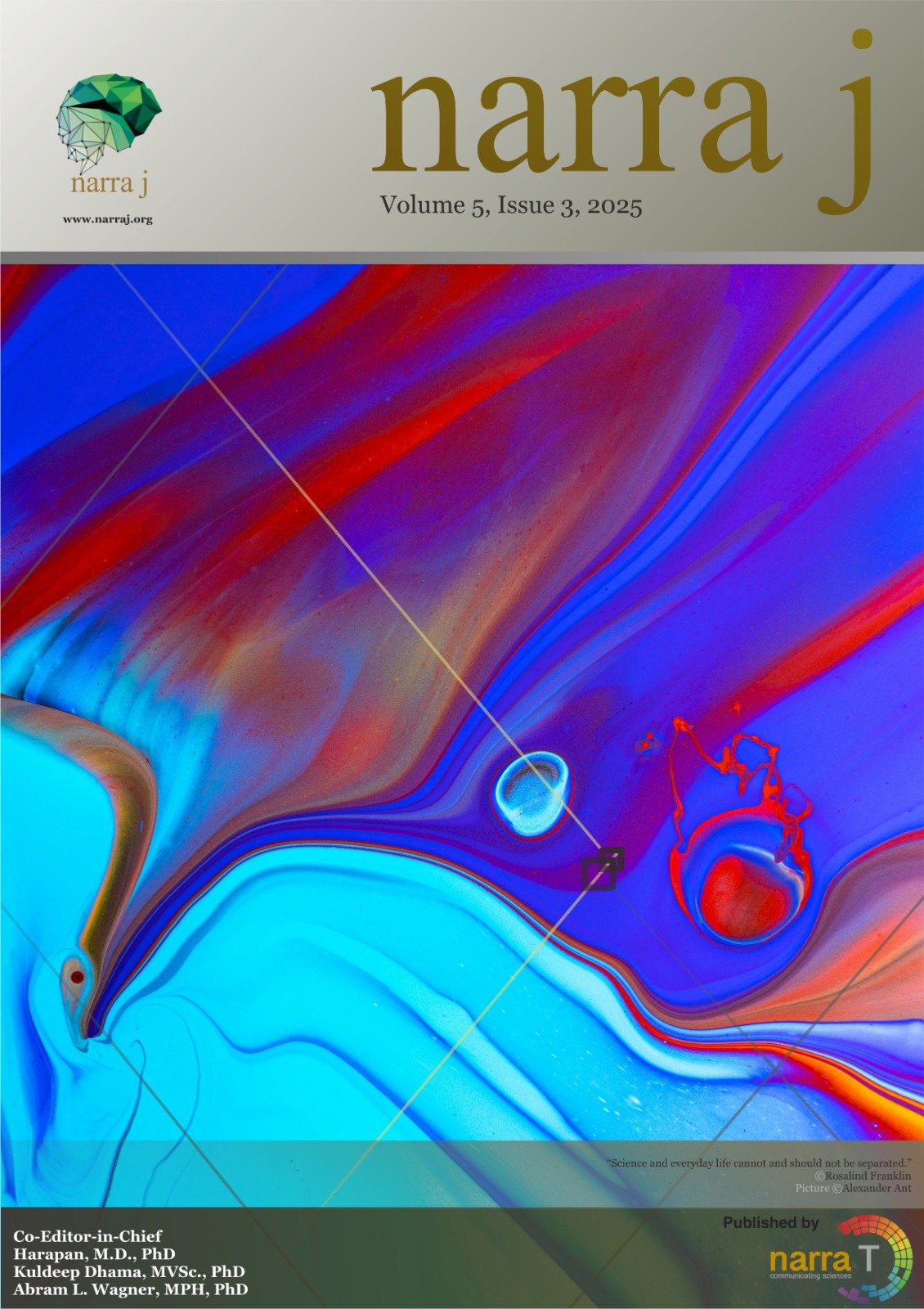Antimicrobial resistance and empirical antibiotic use in diabetic foot infections: A retrospective study from Indonesia
DOI:
https://doi.org/10.52225/narra.v5i3.2895Keywords:
Diabetic foot infection, antimicrobial susceptibility, empirical antibiotic guideline, multidrug resistance, surgical debridementAbstract
Diabetic foot infection (DFI) represents a major complication of diabetes mellitus with significant morbidity, frequently leading to amputation if not optimally managed. The aim of this study was to analyze clinical, microbiological, and antibiotic susceptibility data from patients with type 2 diabetes who presented with foot infections in Indonesia. The retrospective study, conducted at St. Elisabeth Hospital in North Sumatra, Indonesia, predominantly comprised male farmers with a mean diabetes duration of 8.6 years, most of whom exhibited advanced ulcer severity (64.5% at Wagner grade III). Surgical debridement was performed in 79.0% cases, and amputation in 21.0% of cases. Laboratory investigations revealed poor glycemic control (mean HbA1c 10.12%) and biochemical markers indicative of systemic inflammation and renal impairment. Microbial cultures identified a predominance of Gram-negative bacteria (58.1%), primarily Klebsiella pneumoniae, Proteus mirabilis, and Escherichia coli, whereas Gram-positive isolates (41.9%) were dominated by Staphylococcus aureus, including methicillin-resistant strains. Empirical outpatient and inpatient antibiotic regimens commonly included amoxicillin, ciprofloxacin, metronidazole, and ceftriaxone; however, in vitro susceptibility testing demonstrated limited efficacy of β-lactams such as ampicillin and amoxicillin (<10% sensitivity). In contrast, linezolid, amikacin, vancomycin, carbapenems, and fosfomycin exhibited superior activity against the isolated pathogens. These findings emphasize the critical need for empirical antibiotic guidelines tailored to local microbial ecology and resistance profiles, integrated with early surgical management, stringent glycemic control, and multidisciplinary care. This comprehensive approach is essential to reduce the risk of amputation and improve clinical outcomes in tropical, resource-limited settings.
Downloads
Downloads
How to Cite
Issue
Section
Citations
License
Copyright (c) 2025 Menang B. Tarigan, Rama M. Saragih, Kevin A. Tarigan, Franciscus Ginting

This work is licensed under a Creative Commons Attribution-NonCommercial 4.0 International License.



